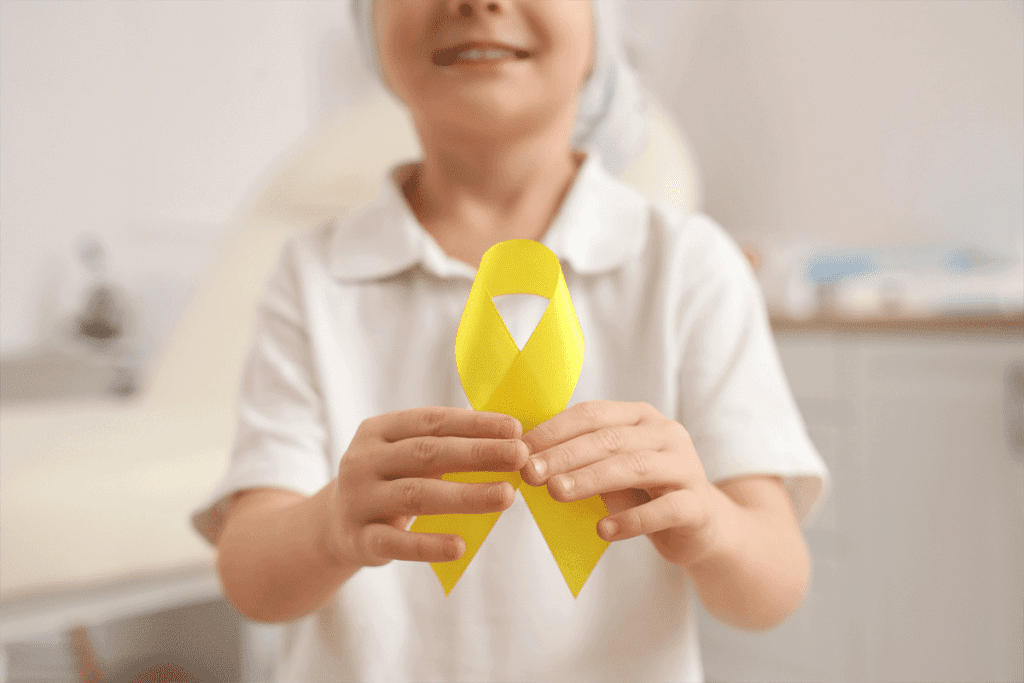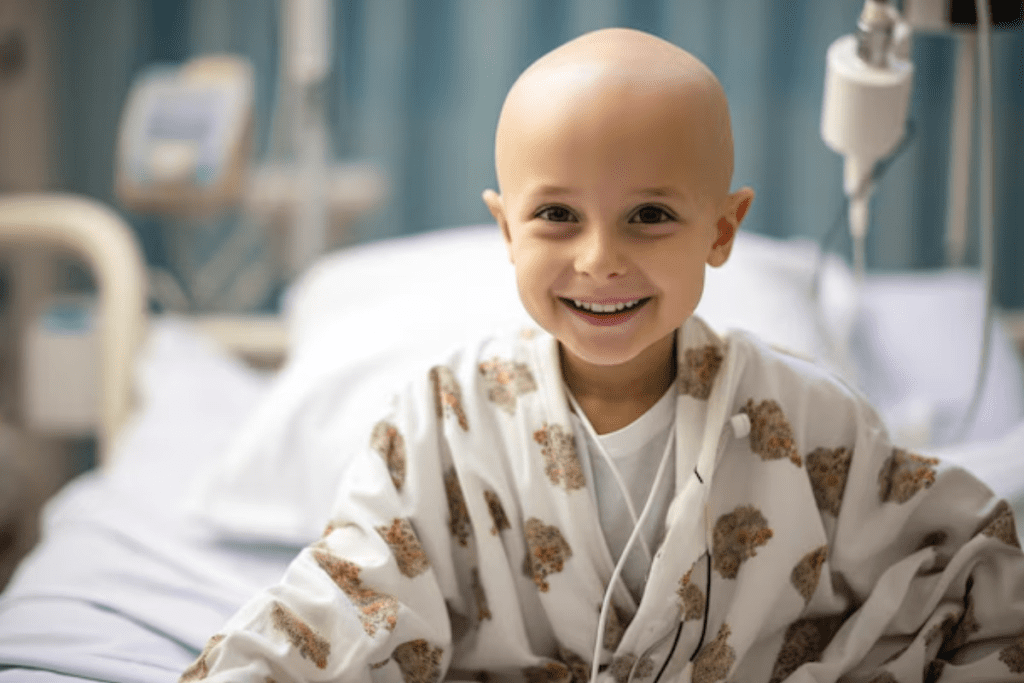Last Updated on November 12, 2025 by
We break down the data based on leukemia survival rate by age group. Understand the current life expectancy for childhood cancer survivors today.
Childhood cancer survival has improved dramatically in recent decades. Studies show that over 80% of children in high-income countries survive at least five years after diagnosis. This is a big increase in survival rates.

We are seeing a significant shift in the life expectancy of childhood cancer patients. This is thanks to better medical treatments and care. But, despite this progress, disparities in healthcare access and long-term health challenges remain.
The history of treating childhood cancer has seen big steps forward. These steps have greatly improved survival rates. What was once a death sentence is now a manageable condition for many.
Studies show a big jump in five-year survival rates for childhood cancer. Rates have gone from under 60% to over 80% in rich countries. This change is thanks to better medical tech, treatment plans, and understanding cancer.
Some key stats show this progress:

With better survival rates, we now see childhood cancer as a chronic condition. This change means we focus more on long-term health and quality of life. It’s a big shift in how we care for patients.
Key parts of this shift include:
As we keep learning and improving, we’re moving towards a future where more kids beat cancer and live well after diagnosis.
Recent data on childhood cancer survival rates offer hope and insight into the effectiveness of modern treatments. We have made significant progress in understanding and treating childhood cancers. This has led to improved survival rates across various cancer types.

The overall 5-year survival rate for childhood cancers has seen a substantial increase. The latest statistics show that the 5-year survival rate for all childhood cancers combined has risen to about 85%. But, survival rates vary a lot depending on the type of cancer.
These statistics highlight the progress made in treating various forms of childhood cancer. For example, the 5-year survival rate for childhood leukemia has improved dramatically, with an overall rate of 86.3%. This improvement is largely due to advancements in treatment protocols and supportive care.
Analyzing survival rate improvements over the decades provides valuable insights into the effectiveness of evolving treatment strategies. We have observed a steady increase in survival rates for childhood cancers over the past few decades.
This consistent improvement reflects the impact of advancements in medical research, treatment protocols, and supportive care on life expectancy with leukemia and other childhood cancers. As we continue to develop more effective treatments, we expect to see further improvements in survival rates.
Understanding these statistics is key for patients, families, and healthcare providers. By examining the current survival statistics for childhood cancers, we can better appreciate the progress made and the challenges that remain in our quest to improve outcomes for all children diagnosed with cancer.
Age is a key factor in leukemia survival rates. It affects how well treatments work and how long people can live. Leukemia is a blood cancer that can strike anyone, from babies to adults. Knowing how age affects survival is vital for patients, their families, and doctors.

Leukemia in babies under one is very tough. Survival rates for these young ones have been lower. But, new treatments are showing hope.
Recent studies show that babies with a certain type of leukemia can live longer with strong chemotherapy. Finding and treating genetic risks early is key to better care.
Kids aged 2 to 9 with leukemia usually do better. They often have a type of leukemia that responds well to common treatments.
The 5-year survival rate for these kids has greatly improved. This is thanks to better treatments and targeted therapies.
Teenagers with leukemia face unique challenges. They are more likely to have a certain type of leukemia and may face more side effects. Yet, survival rates have gone up.
New treatments like stem cell transplants and new medicines are helping. Teens and young adults need special care that meets their medical and emotional needs.
It’s important to understand how age affects leukemia survival. This knowledge helps doctors create better treatment plans and support care. As research keeps improving, we can look forward to better survival rates for everyone.
Families and doctors need to know how long kids with leukemia can live. Leukemia in kids, like ALL and AML, has better treatments now. This has led to more kids surviving.
ALL is the most common leukemia in kids, making up 80% of cases. Thanks to better treatments, kids with ALL now live longer. Early treatment is key to a better life expectancy.
“The outlook for kids with ALL is good, thanks to quick diagnosis and treatment,” say doctors. Kids with ALL get a mix of chemotherapy, steroids, and sometimes targeted therapy or radiation.
AML is rarer in kids but more aggressive than ALL. While survival rates for AML have gone up, they’re not as high as ALL’s. Kids with AML have a 60-70% chance of living 5 years. AML treatment often includes strong chemotherapy and sometimes a stem cell transplant.
Many things can affect how long kids with leukemia live, like the leukemia’s genes, the child’s age, and how well they respond to treatment. Long-term care is critical for managing treatment side effects and keeping survivors healthy.
As one study found, kids who beat leukemia face risks of late effects like second cancers, heart disease, and hormone problems. So, it’s important to keep watching and supporting them.
By knowing these factors and improving treatments, we can help kids with leukemia live longer and better lives.
Several key factors influence the prognosis of childhood cancer. These include the stage at diagnosis and patient-specific characteristics. Knowing these factors is key to finding the best treatment and improving survival rates.
Cancer-specific biological markers are very important. They help identify the cancer type, its aggressiveness, and how it might respond to treatment. For example, certain genetic mutations in leukemia can greatly affect treatment outcomes.
The stage and extent of disease at diagnosis are critical. Early detection often means better outcomes, as the cancer is less likely to have spread. But, advanced stages make treatment harder and usually lead to a poorer prognosis.
How a patient responds to initial treatment is a strong indicator of their prognosis. Good responses to treatment usually mean better survival rates. Poor responses might mean a change in treatment strategy is needed.
Patient-specific factors, like age, overall health, and genetic predispositions, also affect prognosis. For example, younger children may have different outcomes than adolescents. This is because of differences in cancer biology and treatment response.
By understanding and addressing these factors, healthcare providers can create more effective treatment plans. This approach is tailored to each patient’s needs, helping to improve childhood cancer survival rates.
Modern treatments have greatly improved survival rates in childhood cancer. Advances in research and technology have changed how we treat cancer. This section will look at how these new treatments have helped children with leukemia.
Risk-adapted therapy is key in treating childhood cancer. It tailors treatment based on the patient’s risk factors. This way, we can reduce harm while keeping treatment effective.
This method has greatly improved outcomes for children with acute lymphoblastic leukemia (ALL). Studies show it boosts survival rates for these patients.
Targeted molecular therapies are a big step forward in treating childhood cancer. They aim to kill cancer cells while sparing normal cells. For example, tyrosine kinase inhibitors target specific cancer-causing molecules.
These therapies have made treatments more effective and reduced side effects. We’re moving towards treatments that fit each patient’s cancer exactly.
Stem cell transplantation is now a key part of treating some childhood cancers. Better matching and treatment regimens have improved results.
Survival rates for children getting stem cell transplants have gone up. We expect even better results as we keep improving this area.
Chemotherapy is a big part of treating childhood cancer. Knowing what to expect after treatment is important. Most kids who finish chemotherapy can live into adulthood.
But, chemotherapy can have long-term effects. These can include higher risks of new cancers or organ problems. Close follow-up care is key to managing these risks.
By keeping improving treatments and care, we can make life better for childhood cancer survivors.
Geographic and socioeconomic factors greatly affect the survival rates of kids with cancer. We see big differences in survival rates based on where a child lives and their family’s income.
Research shows that kids in high-income countries have much better survival rates than those in low- and middle-income countries. This gap is due to better healthcare access, advanced treatments, and skilled doctors.
In rich countries, the childhood cancer survival rate has greatly improved thanks to new medical tech and treatments. But, in poorer countries, not having enough healthcare and late diagnosis lead to lower survival rates.
There are also differences between rural and urban areas within countries. Kids in cities usually get better cancer care, leading to higher survival rates than those in rural areas.
The distance to cancer centers, getting to them, and having support services are key factors in survival rates in rural versus urban areas.
In the U.S., having health insurance is very important for kids with cancer. Kids with good insurance get the care they need faster, which helps them live longer.
On the other hand, kids without insurance or with bad coverage might face delays in getting help. This can hurt their chances of survival. We need to make sure all kids with cancer get the care they need.
By understanding these differences, we can work on fixing them. This will help make sure all kids with cancer get the best care possible, no matter where they live.
Childhood cancer survivors face many health risks. These include secondary cancers, heart problems, and other issues from treatment. As they grow up, it’s key to manage these risks for better health and life quality.
Survivors of childhood cancer are at high risk for new cancers. Chemotherapy and radiation, though lifesaving, can cause this. For example, those who had leukemia may face a higher risk of new cancers.
Research shows that many survivors develop secondary cancers. So, regular check-ups and monitoring are vital for catching and treating these issues early.
Survivors often face heart and hormone problems. Some treatments can harm the heart and blood vessels, raising disease risk. Radiation and some drugs can also mess with hormone levels.
Childhood cancer treatment can affect the brain. Survivors might struggle with focus, memory, and thinking. These issues can affect school and work, and overall happiness.
Those who had brain tumors or cranial radiation are at higher risk. Early help, like brain therapy and school support, is key to lessening these effects.
Treatment late effects can shorten a survivor’s life. Issues like new cancers, heart disease, and other complications can be life-shortening. For leukemia survivors, these risks can affect life expectancy.
It’s vital to understand and manage these risks. Regular care helps manage long-term health and can increase life expectancy. Healthcare teams play a big role in helping survivors deal with life after cancer.
Life after childhood cancer is filled with many challenges. Survivors must face new hurdles and get the right support. They start a new journey after treatment, dealing with different issues.
Long-term care is key for childhood cancer survivors. Regular check-ups help catch late effects like secondary cancers. Survivors should work with their healthcare team to plan their care.
Follow-up care should include:
Childhood cancer survivors face unique educational and career challenges. They should talk to their healthcare providers and schools about getting the help they need.
Important things to consider are:
Cancer treatment can impact fertility. It’s important to talk about fertility options before starting treatment. Knowing their fertility status helps survivors plan their families.
Survivors should be aware of:
Childhood cancer can deeply affect survivors and their families. It’s vital to seek psychological support for anxiety, depression, or other emotional issues.
Support can be found through:
By addressing these areas, childhood cancer survivors can navigate their new life with the right support. This improves their long-term health and happiness.
Medical treatments have greatly improved over the years. This has led to better survival rates for kids with cancer, like leukemia.
Today, many kids with leukemia can live long, healthy lives. This is a big change from before. It brings hope to families dealing with this disease.
Looking ahead, we need more research and support. Studies on new treatments and personalized care are promising. They could lead to even better results.
We can build on our current successes. By tackling the remaining challenges, we aim for a future where every child with cancer has a good chance of survival. And they can live a happy, healthy life.
Childhood leukemia survival rates have greatly improved. Acute lymphoblastic leukemia (ALL) now has a survival rate over 90% in some age groups.
Treatment advances have turned childhood cancer from a death sentence to a manageable condition. Survival rates and life expectancy have significantly increased.
Survival rates depend on age at diagnosis, leukemia type, biological markers, disease stage, and treatment response. Patient-specific factors also play a role.
Age impacts leukemia survival. Children aged 1-9 years generally have better outcomes than infants or teens.
Modern treatments offer hope for long-term survival for most ALL patients. Some studies show a cure rate over 90% in certain age groups.
New treatments like risk-adapted therapy, targeted molecular therapies, and stem cell transplantation have boosted survival rates and life expectancy.
Yes, survival rates vary widely. High-income countries and urban areas often have better outcomes than low-middle-income countries and rural areas due to access to care.
Survivors face risks of secondary cancers, heart and endocrine problems, and neurocognitive issues. These can affect their life expectancy.
Survivors need ongoing care, educational support, fertility guidance, and psychological help. These resources are key for a smooth transition after cancer.
Many leukemia survivors can live a normal life span. This depends on the leukemia type, treatment, and individual factors.
Yes, there’s a risk of secondary cancers or relapse. Long-term follow-up care and monitoring are essential.
Subscribe to our e-newsletter to stay informed about the latest innovations in the world of health and exclusive offers!